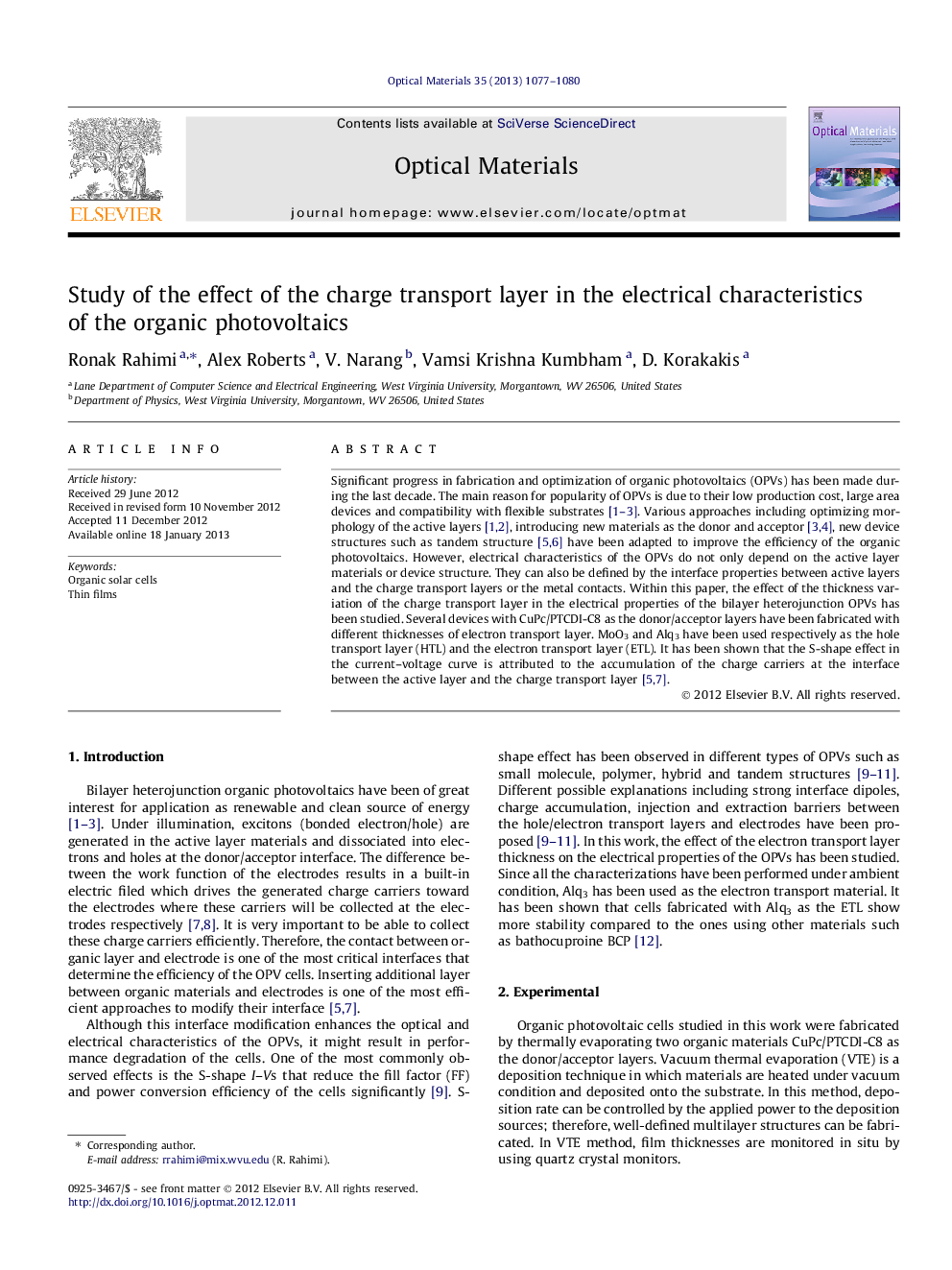| Article ID | Journal | Published Year | Pages | File Type |
|---|---|---|---|---|
| 1495374 | Optical Materials | 2013 | 4 Pages |
Significant progress in fabrication and optimization of organic photovoltaics (OPVs) has been made during the last decade. The main reason for popularity of OPVs is due to their low production cost, large area devices and compatibility with flexible substrates [1], [2] and [3]. Various approaches including optimizing morphology of the active layers [1] and [2], introducing new materials as the donor and acceptor [3] and [4], new device structures such as tandem structure [5] and [6] have been adapted to improve the efficiency of the organic photovoltaics. However, electrical characteristics of the OPVs do not only depend on the active layer materials or device structure. They can also be defined by the interface properties between active layers and the charge transport layers or the metal contacts. Within this paper, the effect of the thickness variation of the charge transport layer in the electrical properties of the bilayer heterojunction OPVs has been studied. Several devices with CuPc/PTCDI-C8 as the donor/acceptor layers have been fabricated with different thicknesses of electron transport layer. MoO3 and Alq3 have been used respectively as the hole transport layer (HTL) and the electron transport layer (ETL). It has been shown that the S-shape effect in the current–voltage curve is attributed to the accumulation of the charge carriers at the interface between the active layer and the charge transport layer [5] and [7].
► Power conversion efficiency of the organic photovoltaics can be tailored by changing the thickness of the buffer layer. ► Buffer layer should be thick enough to have a complete coverage over the organic layer against metal deposition damages. ► S-shape characteristics for thicker buffer layers, due to an increase in the resistance of this layer. ► Higher resistance of buffer layer results in charge accumulation and recombination in the active/buffer layer interface.
